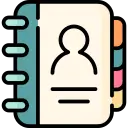PLEASE MATCH YOUR ASSIGNMENT QUESTIONS ACCORDING TO YOUR SESSION
IGNOU MCS-22 (July 2024 – January 2025) Assignment Questions
Q1. (a) Compare and contrast the Distributed operating system with the Network operating system. Give an example of each.
(b) Define a Real Time Operating System. Give any two examples of a real time operating system.
Q2. (a) What is EFS service? Describe the concept of encryption using EFS service.
(b) Compare TFTP and FTP. Which protocol is used by TFTP at the transport layer and why?
Q3. (a) List and explain the file systems supported by Linux operating system. Also, write the security features provided by Linux in each file system.
(b) Compare and Contrast the ‘Mandatory Access Control” and “Discretionary Access Control” mechanism in windows 2000.
Q4. Write the step-by-step procedure to create a group named “MCS022”. Now add a user “SOCIS” in Windows 2000 operating system. Assume user “SOCIS” is already a member of the guest account in your system. Also explain the basic purpose of enabling the offline features in Windows 2000 operating system.
Q5. Answer the following questions related to Linux commands:
(i) Show the users logged in on the network.
(ii) List the files having more than one digit in the name.
(iii) Tell the system to run the process continuously even if the user logs out.
(iv) To allow a user to communicate with another user, logged in by splitting the screen and providing two-way communication.
(v) To kill a process after one hour.
Q6. (a) List and describe the various security features in Windows 2000 operating system. (5 Marks)
(b) What is Virtual Memory? Explain the abstract model of virtual to physical address mapping with reference to Linux operating system.
Q7. Write a Linux shell script for automatic grouping of files given in a directory. All files will be grouped on the basis of their size and will be saved into the newly created folders based on file size groups given below: Files will be grouped into 0 to 5 kB, 5 kB to 5 MB, 5 MB to 1 GB and greater than 1 GB.
Q8. Write short notes on the following:
(a) LAN Topologies
(b) Token Ring
(c) Network Monitoring Tools
(d) Firewall
(e) Active Directory in Windows 2000
IGNOU MCS-22 (July 2023 – January 2024) Assignment Questions
Q1. (a) Explain two approaches used to improve system performance by overlapping input, output and processing in CPU.
(b) Explain the characteristics of multiprocessor operating system.
Q2. (a) What is Token Ring? How does it work? Differentiate between token ring and token bus.
(b) What is meant by Trust Relationship? Discuss the role of Kerberos and Domain controller in maintaining trust relationships.
Q3. (a) Describe the pre-installation checks and information gathering that need to be carried out before installing LINUX on a computer.
(b) Differentiate between absolute and relative path names, along with an example of each.
Q4. Answer the following questions related to Linux commands:
(a) Is desired to create a file in LINUX called “newfile” that consists of the last 15 lines of a file “filer followed by the last 6 lines of a file “file2”. Both “filet” and “file2” already exist. Write the sequence of commands in LINUX to achieve this
(b) Write the LINUX command to change the password of a user called “SOCIS” to “E93df!kN#”. Who can run this command?
(c) Write the LINUX command to find the number of users currently logged into the system?
(d) Write the LINUX command to take a text file named “source-file” as input and circularly shift every small case letter forward by 5 characters, such that “a” becomes “f”, “z” becomes “e” and so on, but “A”, “3”, “$” and other such characters are left unchanged.
Q5. (a) What is the Active Directory in Windows 2000? Describe, with the help of a diagram, the logical structure of the Active Directory.
(b) Differentiate the role and responsibilities of user mode and kernel mode of Windows 2000 system.
Q6. (a) Write a shell script which will generate the list of users along with details of files those are created /modified by the respective user during the specified time.
(b) Differentiate between LAN, MAN and WAN in terms of size, protocols, access mechanism, hardware devices and switching methods.
Q7. (a) What are the security services provided by IPsec? Discuss the two IPsec components in WINDOWS 2000. Also explain the policy options for IPsec implementation.
(b) List and describe various security features in WINDOWS 2000 O/S.
Q8. Write short notes on the following:
(a) NTFS
(b) Packet switching
(c) EFS services
(d) Firewall










